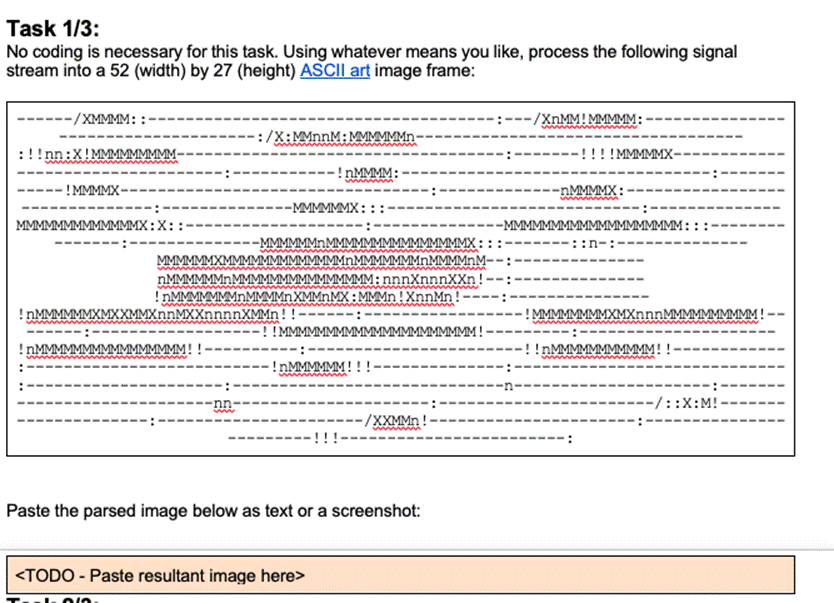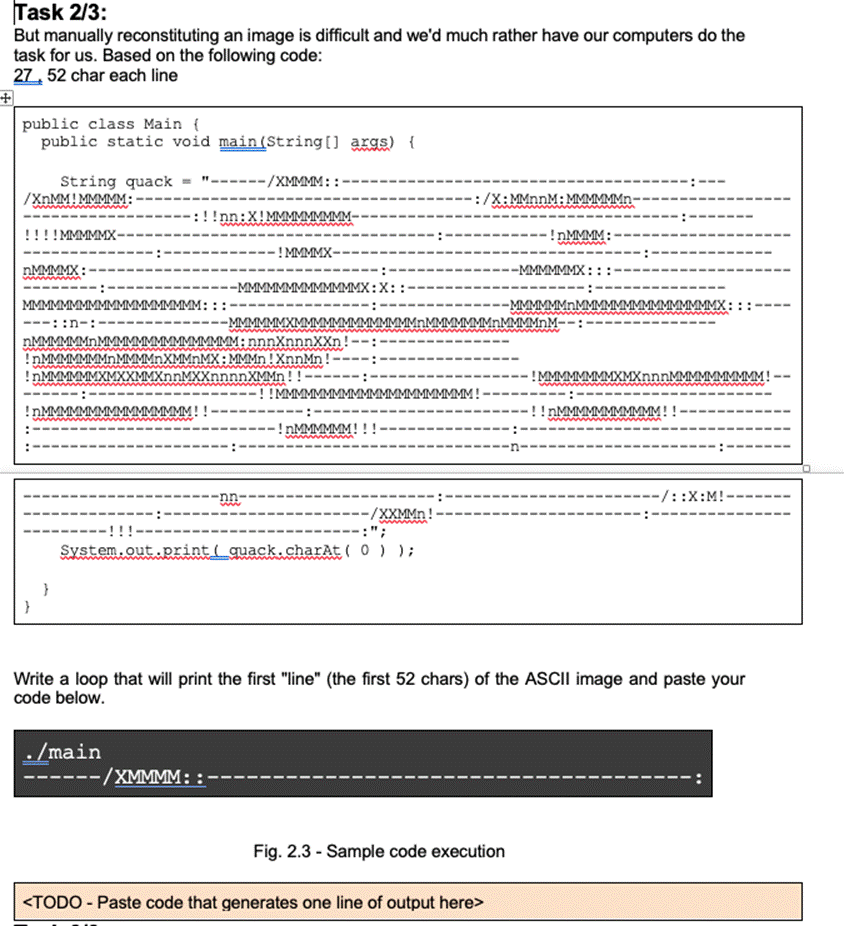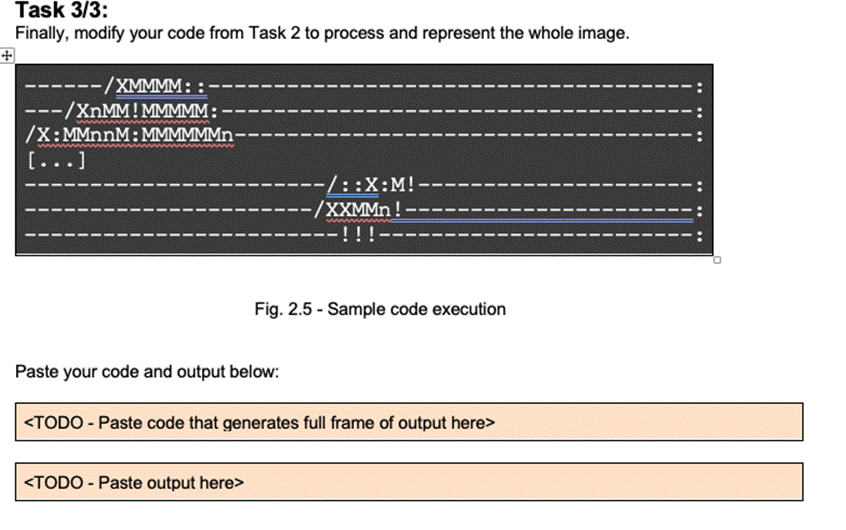Answered step by step
Verified Expert Solution
Question
1 Approved Answer
Task 1/3: No coding is necessary for this task. Using whatever means you like, process the following signal stream into a 52 (width) by




Task 1/3: No coding is necessary for this task. Using whatever means you like, process the following signal stream into a 52 (width) by 27 (height) ASCII art image frame: ------/XMMMM: :!!nn:X! MMM !MMMMX- MMMMMM !nMMMMM MMMX:X: : :/X:MMnnM: MMMMM innXMMn nn- MMMMMMX: -!! MMM !nMMMM nMMMM: I: nnnxnnnXXn MMMMX MMMMnM- :MMMn! XnnMn! XXMMn Paste the parsed image below as text or a screenshot: MMMMM! -/XnMM! MMMMM: MMMM nMMMMX: MMMMM IMMMMM:: MXnn MMMMMMMMM --/::X:M! Task 2/3: But manually reconstituting an image is difficult and we'd much rather have our computers do the task for us. Based on the following code: 27, 52 char each line + public class Main { public static void main(String[] args) { /XnMMMMMMM: String quack = } MMMMMMMM ---::-: } MMMM IMMM: ./main -/XMMMM:: !nn:X!! !MMMMX- MMMMM: nnnxnnnXXn! nMX: MMMn! XnnMn! nMXXnnnnXMMn!! ----/XMMMM: !! MMM MX:X: System.out.print (quack.charAt(0) ); -/XXMMn! :/X:MMnnM: MMMMMMn !nMMMM: Fig. 2.3 - Sample code execution MMMMMMX Write a loop that will print the first "line" (the first 52 chars) of the ASCII image and paste your code below. MMMnl MMMMnM- -/::X:M! Task 3/3: Finally, modify your code from Task 2 to process and represent the whole image. -/XMMMM: ---/XnMM! MMMMM: /X:MMnnM: MMMMMMn- [...] Paste your code and output below: -- -/::X:M! -- /XXMMn! wwwww !!! - Fig. 2.5 - Sample code execution Problem Description: In order to transmit data across a cable, a sender transmits a series of high and low voltages which a receiver may interpret as "1's" and "0's". This may be further abstracted by dividing the stream into discrete chunks, then calling these chunks a representation of something (like letters, numbers, frequencies, amplitudes, etc.). One of the most familiar examples of this is video signals, where each pixel P in a frame is transmitted one after another along the wire. SENDER -> Px -> P -> P3 -> P -> P, -> P. -> RECEIVER But if the pixels are all lined up, how are they interpreted as an image? In one strategy, the display merely places the pixels as one might place letters when writing a book, from the top left, in horizontal lines, to the bottom right. Each row is referred to as a "scanline", and the display is specified by the width and height in pixels. Currently, a high quality display (colloquially termed '4K') might have a resolution up to 3840 x 2160 (width x height). This is sometimes also called '2160p', or 2160 line resolution. Interlude (just for funsies)! Calculate the number of bytes needed to represent an R:G:B tuple if each color channel can be in a state from 0 to 255. Calculate the following based on a 4K display: How many pixels are present on a 4K image? If the display refreshes at 60 hertz, how many pixels must be processed per second? Based on your byte calculation for the RGB values, how many bytes (minimum) are needed to refresh a 4K image at 60 hertz? An HDMI cable (standard speed) can transmit data at 4.92 gigbits per second. Is this a sufficient connection to carry this signal?
Step by Step Solution
★★★★★
3.48 Rating (145 Votes )
There are 3 Steps involved in it
Step: 1

Get Instant Access to Expert-Tailored Solutions
See step-by-step solutions with expert insights and AI powered tools for academic success
Step: 2

Step: 3

Ace Your Homework with AI
Get the answers you need in no time with our AI-driven, step-by-step assistance
Get Started


